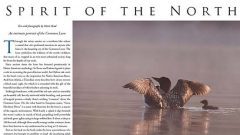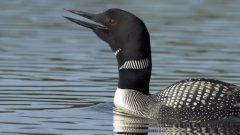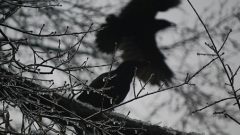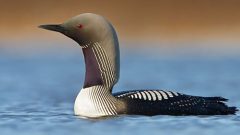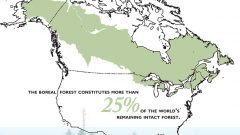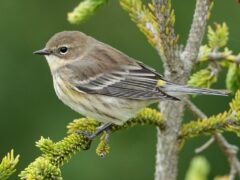The Four Keys to ID
- Size & Shape
Common Loons are large, diving waterbirds with rounded heads and dagger-like bills. They have long bodies and short tails that are usually not visible. In flight, they look stretched out, with a long, flat body and long neck and bill. Their feet stick out beyond the tail (unlike ducks and cormorants), looking like wedges.
Relative Size
Larger and longer-bodied than a Mallard, smaller and shorter-necked than a Canada Goose.

 between crow and goose
between crow and gooseMeasurements
- Both Sexes
- Length: 26.0-35.8 in (66-91 cm)
- Weight: 88.2-215.2 oz (2500-6100 g)
- Wingspan: 40.9-51.6 in (104-131 cm)
© Cliff Peterson / Macaulay Library
- Color Pattern
In summer, adults have a black head and bill, a black-and-white spotted back, and a white breast. From September to March, adults are plain gray on the back and head with a white throat. The bill also fades to gray. Juveniles look similar, but with more pronounced scalloping on the back.
© Marc St. Onge / Macaulay Library - Behavior
Common Loons are stealthy divers, submerging without a splash to catch fish. Pairs and groups often call to each other at night. In flight, notice their shallow wingbeats and unwavering, bee-lined flight path.
- Habitat
Common Loons breed on quiet, remote freshwater lakes of the northern U.S. and Canada, and they are sensitive to human disturbance. In winter and during migration, look for them on lakes, rivers, estuaries, and coastlines.
© Brian Collins / Macaulay Library



